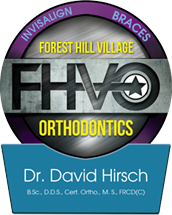Braces are a big trend these days. Everybody wants straighter teeth and a more beautiful smile, and you can get that with braces. Whether you suffer from crowded teeth, crooked teeth, spacing between your teeth, or any other problem with how your teeth are arranged, braces are the solution for you. Unlike 15 years ago, there are a few options to choose from nowadays. These ideas emerged to solve the common problems of braces, such as their looks and comfort. One of these options – and possibly the greatest one – is Invisalign. So if you decide to go ahead and take the plunge to correct your teeth. You must ask yourself: braces vs Invisalign: Which is best for me?
How do braces work?
Traditional metallic braces (and all other types of fixed braces such as clear braces and lingual braces) work with the principle of continuous low force. When the brackets are attached to your teeth, with a wire crossing them held in place by the colorful round elastic bands, the whole mechanism pulls the teeth into the desired position. This transition of course takes time so that the bone can adjust to the new teeth positions.
How does Invisalign work?
The same principle of continuous low force applies, but through a pushing rather than pulling motion. Invisalign has no brackets, wires or elastics, but rather transparent plastic molds called aligners. When you wear the aligners on the outer surface of the teeth, they push the teeth to the new position.
View this post on Instagram
Braces vs Invisalign: Which is best for me?
To answer this question, we must break down a list of pros and cons for both types.
Pros of Braces:
- Easy, fast and reliable.
- Have been used for ages with great success
- Gives complete control to the orthodontist. This is the reason they are preferred and still used worldwide.
- A cheaper alternative to the more esthetic option.
Cons of Braces:
- They compromise the appearance. The term “metal mouth” is widely used to describe braces wearers.
- Constant scraping the gums, lips and cheeks causing bruising and ulcerations.
- Very long treatment time, which can reach up to 1.5 years.
- Subject to human error since the whole planning is done through the orthodontist.
Pros of Invisalign:
- Greatly improved appearance compared to metal braces. In fact, it is practically invisible hence the name “Invisalign”.
- Very comfortable to wear since it is made of highly polished plastic.
- While it still takes a lot of time to complete, the treatment time is greatly reduced compared to braces. Average treatment times are 8 to 10 months.
- It is entirely planned and made with computers. This gives superior accuracy and virtually no human errors.
- Fewer visits to the orthodontist for adjustments and tweaks.
Cons of Invisalign:
- The orthodontist can do no alterations and has virtually no control over the treatment and results.
- A bit more expensive compared to the other alternatives.
So there you have it. Every type of braces has its pros and cons. All you need to do is find the type most suitable for you and your needs.

 (416) 789-1231
(416) 789-1231